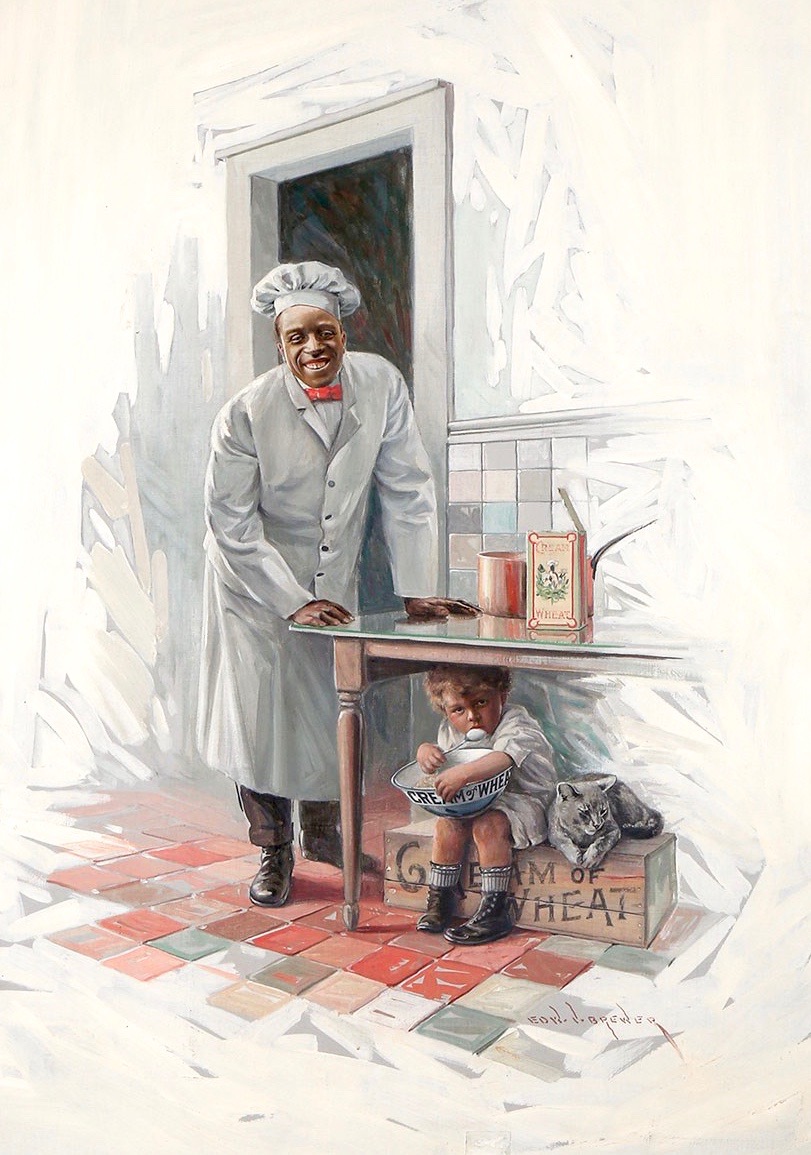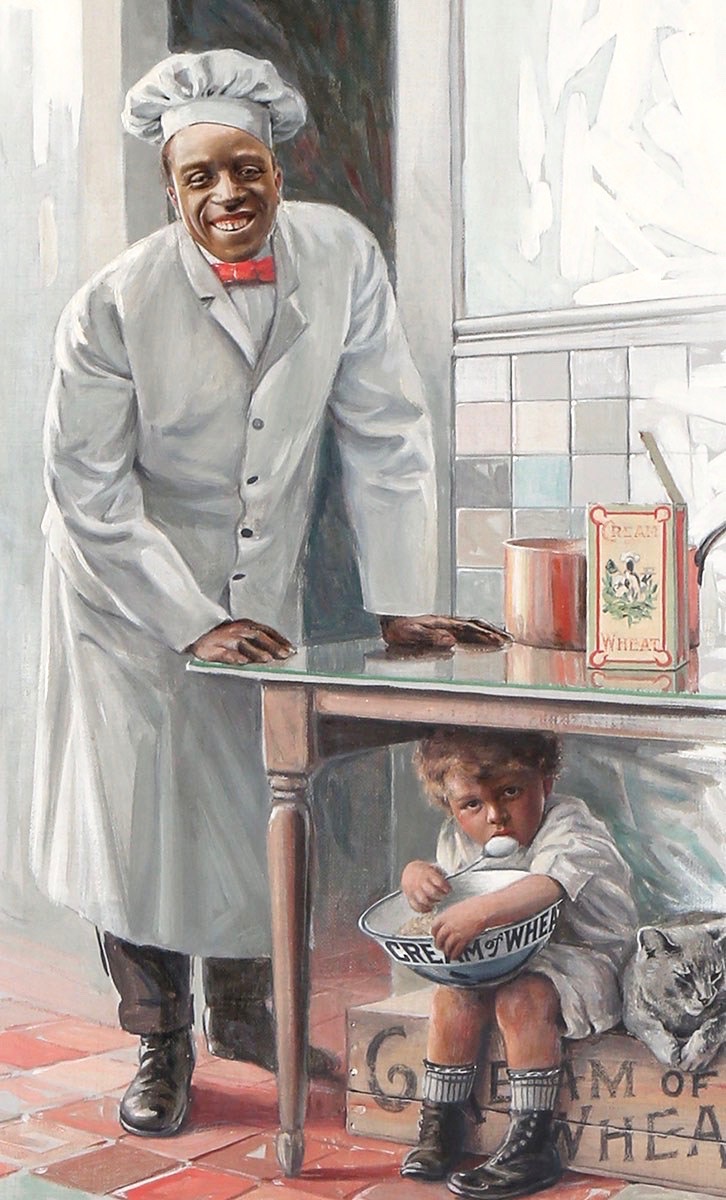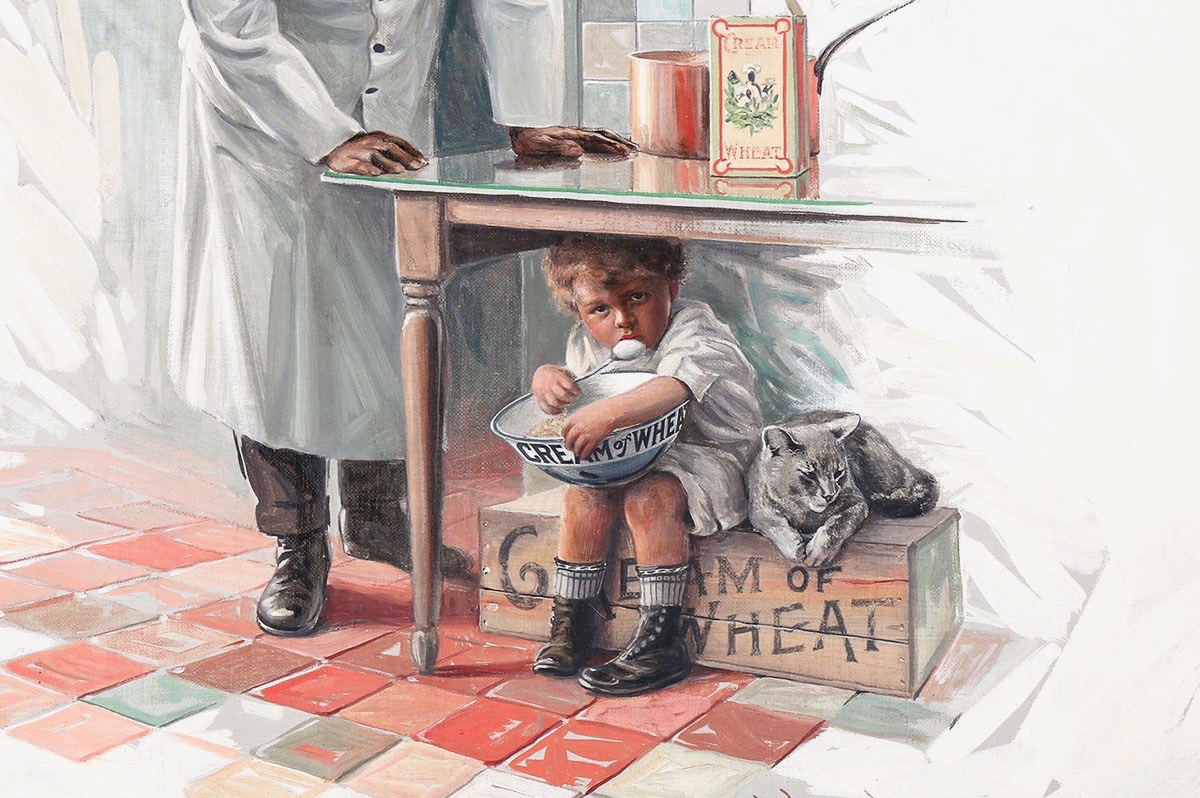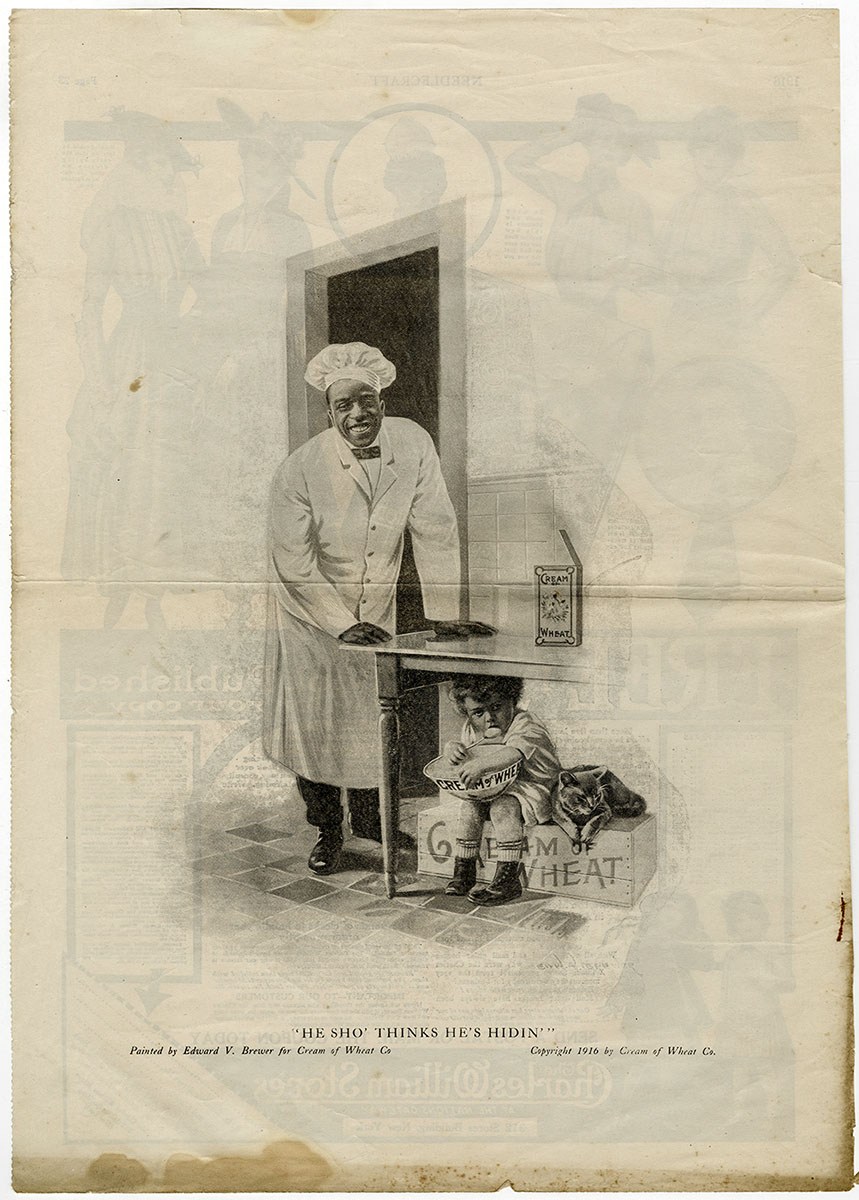"He Sure Thinks He's Hiding" Lot no. 3532
By Edward V. Brewer (American 1883-1971)
1916 (Estimated)
34" x 24"
Oil on Stretched Canvas with Mixed Media Photo
Signed Lower Right
SOLD
Cream Of Wheat Advertisement
An early original commissioned painting by the Saint Paul, Minnesota artist Edward V. Brewer for the Cream of Wheat Company. Image appeared in countless magazines in 1916 and was one of 102 works the artist created for the cereal giant. Titled "He Sho' Thinks he's Hiding" the work appears as a full page color-plate (page 68) in Dave Stivers collectors book The Nabisco Brands Collection of Cream of Wheat Advertising Art.
Each original piece of artwork used in Cream of Wheat advertising was carefully stored and archived at the Cream of Wheat headquarters in northeast Minneapolis. The unusual care taken to protect this thorough, well-maintained archive is testament to the foresight of Emery Mapes, who presided over the Cream of Wheat advertising campaign. Most advertising illustrations in the early 20th century was considered expendable, and were quickly destroyed, lost or thrown away. Mapes insisted upon treating the art as art, and employed the finest talents working as illustrators to help developed Cream of Wheat's folksy nostalgic iconography. Counted among the artists Mapes recruited are N.C. Wyeth, Jessie Willcox Smith, Phillip Goodwin, J.C. Leyendecker, James Montgomery Flagg, and Edward V. Brewer. With the help of this stable of talent, the Cream of Wheat advertising campaign came to define some of the most enduring visions of American hearth and home.
The advertising also created one of the most recognizable, storied, and controversial fictional personalities in American history; Rastus the Chef. Based upon a photograph of African American chef Frank White, Rastus presided over Cream of Wheat boxes and appeared in the company's color advertising campaign from much of the 20th century. His face was often presented as a photo element within the artwork so as to brand a single image of the iconic character. This photo element would be applied to the canvas and painted over and colored as needed by the artist. After the urging of the NAACP Cream of Wheat abandoned the name Rastus (one of many derogatory names used as racial slurs in the late 19th/early 20th century), but the chef remained an integral part of the brand. Always shown smiling, benevolent, and offering comfort, the chef presents an idyllic view of traditional America. This America holds a pre-industrial sense of the bounty of the heartland and also many of the racial tensions inherent to this agrarian image of America. The tension between the sometimes uncomfortable depictions of the Chef and the incredibly poignant nostalgic visions of a timeless America only adds to the historic significance of this uniquely American art.
Between 1911 and 1926 Edward Brewer created 102 original paintings for the Cream of Wheat Company. Brewer's style is often compared to that of Norman Rockwell; both artists relied on familiar surroundings, family and friends and captured the innocence of childhood and the traditional values of family life. A published full page tear sheet of artwork is included in sale.
Explore related art collections: Cream of Wheat / Food / $5,000 - $20,000 / 1910s
See all original artwork by Edward V. Brewer
ABOUT THE ARTIST
EDWARD BREWER of St. Paul was Minnesota's answer to famed illustrator Norman Rockwell. From 1911 until 1926 Brewer created the enormously popular fullpage Cream of Wheat advertisements that appeared monthly in dozens of national magazines. The folksy ads for the Minneapolis company have become collector's items. And Brewer's reputation as an illustrator has been given a fresh coat of polish.
The remainder of this article can be viewed by clicking here and downloading the PDF article direct
http://collections.mnhs.org/MNHistoryMagazine/articles/47/v47i01p002-015.pdf
http://collections.mnhs.org/MNHistoryMagazine/articles/47/v47i01p002-015.pdf







